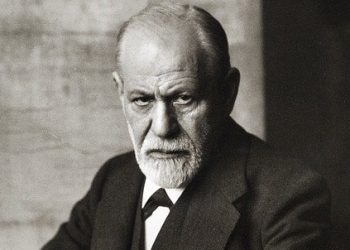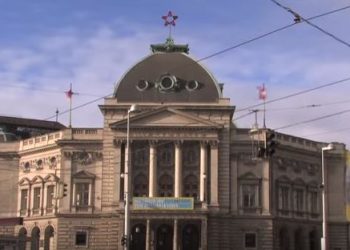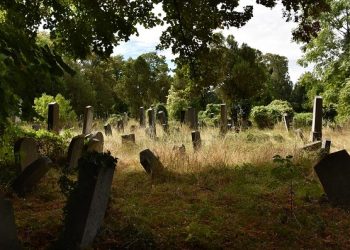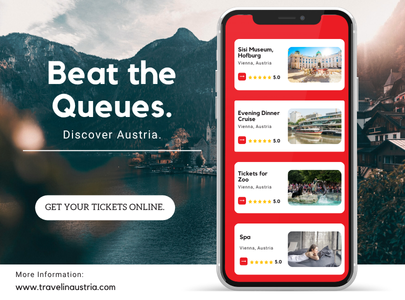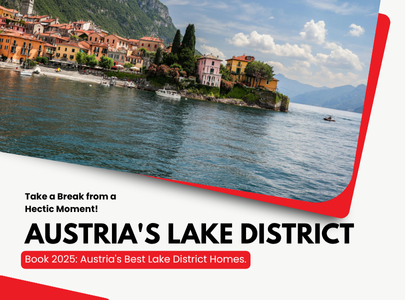In the heart of Vienna, in the city’s first district, there are two enjoyable attractions located opposite each other. One is called Time Travel and the second is Sisi’s Amazing Journey. You can purchase a combined entrance ticket for both of these attractions. In this article, we will detail both.
1. The Time Travel Vienna Experience
Time Travel Vienna is an experience for all the senses, a learning and fun experience right in the heart of Vienna. Within a large complex of 1300 square meters, there are a variety of interactive stations where you can watch shows, see different exhibits, and hear stories and explanations from famous wax figures, focusing on significant historical events from the history of Austria in general and the city of Vienna in particular. The Time Travel experience is accompanied by guides from the venue, and together with them, you move through the various stations in the complex. Although the explanations are in German, there are audio guides in English (and also Russian). Groups depart every 20 minutes throughout the day; it is not possible to go through the complex without a group.
The Magical Journey – 9 Unique Stations Throughout Vienna’s History
The Time Travel complex is divided into 9 stations designed according to the different events that took place in Vienna throughout history. At each station, you will learn about a different period over more than 2,000 years of the city’s history. Read below about the content presented at each of the stations of the magical journey:
Station 1 – Time Travel in a 5D Cinema
At this station, you will enter the unique cinema of the Time Travel experience, where you will experience 2,000 years of history with all your senses. The cinema is equipped with moving seats, 3D glasses, and a variety of other effects.
In this show, you will go back in time to the period of the Roman Empire, when Vienna (then called Vindobona) was a military camp. In this part, you will join a patrol in the ancient Roman camp and experience the life of the soldiers there.
You will jump to the year 1679 when the terrible plague struck Vienna and threatened its future. You will see St. Stephen’s Cathedral during its construction and watch the city’s medieval landscapes from the top of the church tower, which was the tallest in the world at that time. Feel the terror as you stand on the walls of Vienna during the Turkish siege of Vienna that took place in 1529 and 1683, when an army of 200,000 soldiers tried with all its might to overcome the city’s fortifications.
Despite their failure, the Turks managed to leave their mark on the city to this day in a different way than they thought. In the abandoned camp of the Turkish army, coffee bags were found, which marked the beginning of a special period in Vienna – the era of Viennese coffee houses. In 1685, the first coffee house in the city opened, and to this day, Viennese coffee culture has become a national cultural asset and one of the many international heritage assets for preservation by UNESCO. In the last part of this station, you will learn about the world of Viennese coffee houses from 1685 to the present day.
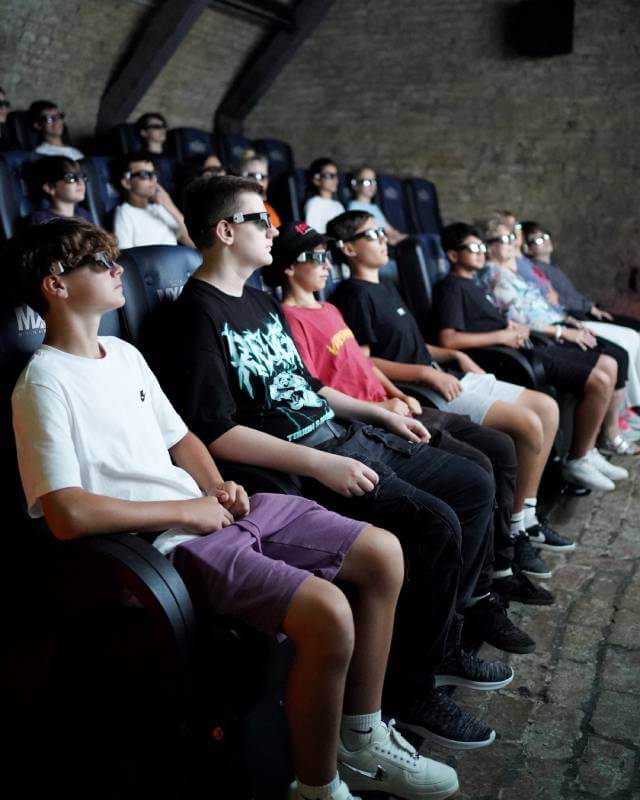
Station 2 – The Habsburg Family Show
At this station, you will witness the members of the Habsburg family, the emperors of the empire, come to life before your eyes in the royal theater. In an amusing and playful way, you will learn about the House of Habsburg, which ruled Austria and the entire region for over 600 years (1278–1918) and was one of the most powerful ruling dynasties in the world. Learn how a clever strategy of marriages with other royals led the Habsburg family to rule over large parts of Europe and establish a real empire. This station will reveal to you the lives of the Habsburg emperors, where you can learn about the central figures in this family who shaped the face of Austria for centuries. Hear the stories of Sisi, Franz Joseph, Maria Theresa, and more.
Station 3 – The Plague Pit
Due to poor hygiene habits, plagues were not a new thing for city dwellers in the Middle Ages. In every period, a plague struck the city and affected many residents. However, the great plague that occurred in 1679 was so terrible that it threatened to completely wipe out urban life in Vienna.
What does it feel like to be in the heart of a plague-stricken city? How did the city’s residents cope? What did they think, dream, and believe? At this station, you will experience the life of the Viennese during the terrible plague. Hear the stories of the locals, especially that of the drunken street artist, Augustin, who fell straight into the pit where the plague victims were thrown outside the city. Please note: If you are visiting with young children, you can skip this station as it can be frightening for them.
Station 4 – Art and Painting in Vienna
Look into the world of the artists of the Modernism movement who became renowned in our world. Learn about the works and achievements of Gustav Klimt, Egon Schiele, Oskar Kokoschka, Friedensreich Hundertwasser, Ernst Fuchs, and Gottfried Helnwein. At three spots in this station, you can take a souvenir photo with the artists.
Station 5 – Mozart and Strauss
Listen to a humorous conversation between the two virtuoso composers Wolfgang Amadeus Mozart and Johann Strauss Jr., accompanied by musical excerpts from their famous works like “The Magic Flute” or the “Danube Waltz.”
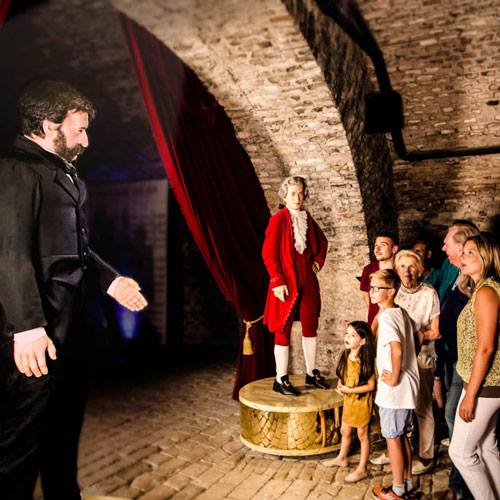
Station 6 – A Musical Journey in Virtual Reality
Join a journey through time combined with virtual reality (VR) glasses through different musical periods in Vienna. Learn about the classical music that flourished in Vienna, about the music of the wine taverns, and meet a variety of musical geniuses who lived and created in Vienna throughout history. You can also watch the Viennese waltz dance.
Station 7 – The World Wars Period
Learn about life in Vienna during the fall of the Habsburg Empire, in World War I and II. Experience an air raid while you are in a bunker in Vienna during World War II. What did it feel like to be in a bunker during the Allied bombings? How many of the city’s residents could even use these bunkers? How many bombings were there in Vienna and what was destroyed during the war? What was life like after the war?
Please note: If you are visiting with young children, you can also skip this station as it can be frightening.
Station 8 – Occupied Vienna
Between 1945-1955, Vienna was under the rule of the Allied powers, and the city was divided into 4 zones. Which countries ruled Vienna? How was the city divided and what happened to the city center during this period?
Experience the pivotal moment when Austria signed the Neutrality Treaty on May 15, 1955, and regained its independence.
Station 9 – A Ride in a Fiaker Carriage
To conclude, sit back comfortably in a classic Viennese carriage and soar with the flying horses back to modern Vienna. See Vienna from a bird’s-eye view and look out over the important and famous places of the city like the Hofburg Palace, Schönbrunn Palace, St. Stephen’s Cathedral, and the Prater Park.
2. Sisi’s Amazing Journey – A New Attraction to Combine with the Time Travel Experience
Sisi’s Amazing Journey is especially suitable for Sisi lovers or for those who are curious why this empress is so popular in Vienna. At the beginning of this experience, you will watch an 18-minute film that will detail and explain the life of Sisi – from her birth to her tragic death. Afterwards, you will take part in a virtual boat ride of about 15 minutes together with the famous Empress Sisi. In this experience, you can learn about and get to know the life of Sisi, who was one of the most colorful figures of the House of Habsburg. Hear interesting stories and visit important places in her life. At the end of the boat ride, you will join a virtual flight over Vienna with 360-degree views.

Things to Know Before You Arrive at Time Travel and Sisi’s Amazing Journey:
- The complex has two floors with about 50 stairs and there is no wheelchair access. Therefore, this attraction is not accessible for people with disabilities.
- Duration of the activity at these attractions:
- Time Travel – about 50 minutes.
- Sisi’s Amazing Journey – about 30 minutes.
- When to arrive? Groups for Time Travel depart every 20 minutes (at the top of the hour, 20 minutes past the hour, and 40 minutes past the hour). Groups for Sisi’s Journey depart every 30 minutes. You should arrive 15 minutes before the scheduled departure time.
- What ages are these attractions suitable for? Basically for all ages. Children under 10 must be accompanied by an adult. It is possible to skip stations like the Plague Pit and the Bunker as they can be more frightening.
- In which languages are these attractions offered? Most of the content is in German, but there are audio guides in English and also Russian (and 8 other languages), so all the content will be translated for you simultaneously at the various stations.
- It is not possible to enter with pets.
- Throughout the attraction complex, it is forbidden to take photos and videos. There are several designated photo points for souvenir pictures.
Additional Essential Information for Visiting the Time Travel Experience and Sisi’s Amazing Journey
Opening Hours:
Every day from 10:00 AM to 8:00 PM. Last admission at 7:00 PM (note that if you want to combine both attractions, you should plan for at least an hour and a half).
Entrance Cost:
1. Time Travel Experience:
- Adult – €21.85
- Child (5-14) – €18.05
- Students – €19.95
- Seniors (from age 55) – €19.95
2. Sisi’s Amazing Journey:
- Adult – €11.40
- Child (5-14) – €8.55
- Students – €10.45
- Seniors (from age 55) – €10.45
Combined ticket for both attractions:
- Adult – €28
- Child (5-14) – €24
- Students – €26
- Seniors (from age 55) – €26
Click to book tickets in advance online (with cancellation option):
Official Website of the Time Travel Experience
Official Website of Sisi’s Amazing Journey
Address: Habsburgergasse, 1010 Wien (The two attractions are opposite each other)
Map:
Other Attractions in the Area – To Continue Your Trip
Since the Time Travel complex is located right in the heart of Vienna, there are a variety of important and popular attractions around it that will fit wonderfully into your trip in the city. The recommended attractions are: the Hofburg Palace, which houses the Imperial Apartments and the Sisi Museum, the Spanish Riding School, the Imperial Treasury, St. Stephen’s Cathedral, the National Library, and the Albertina Museum.
If you are not sure how to plan your trip in the city, you can use the detailed itinerary we have prepared for a 3-4 day trip in Vienna. This itinerary also includes an interactive map and marking of the important places in the city. You can also enrich your trip even more by visiting one of the beautiful classical concerts held in impressive halls or historic churches in the city.



